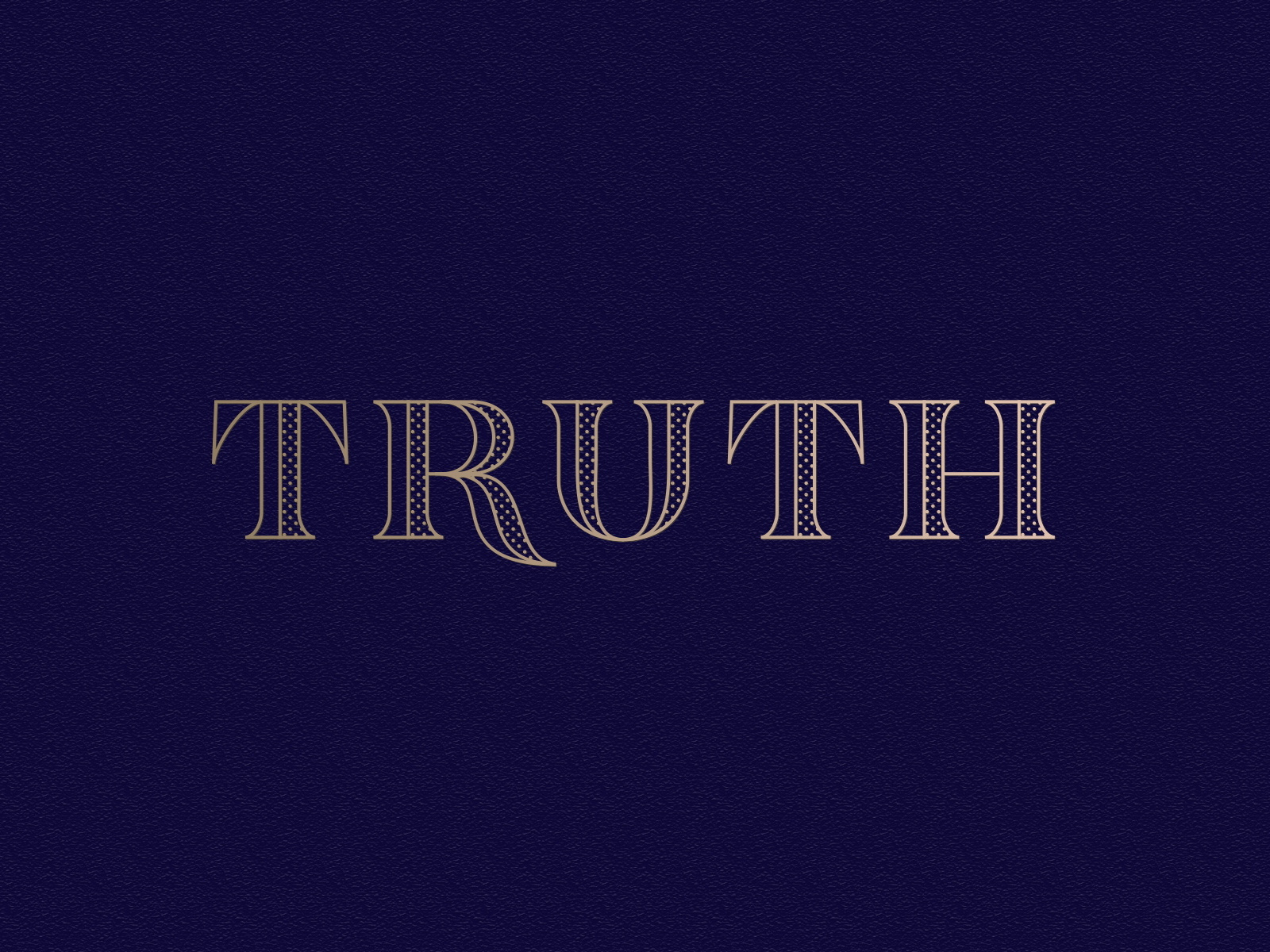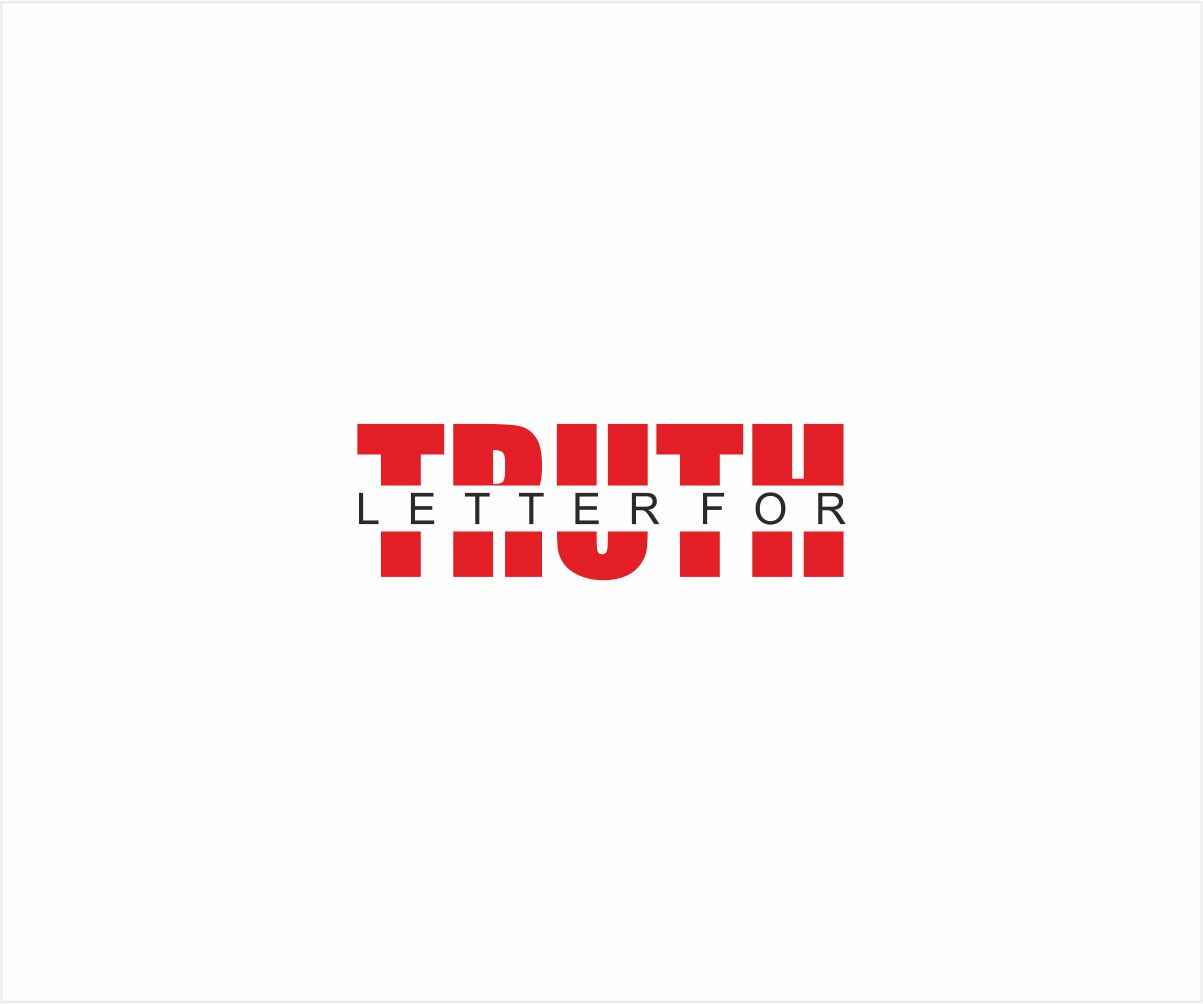The Truth Logo - Unpacking What's Real
Have you ever stopped to think about what "truth" really means, especially when you see it represented, perhaps, in a brand's visual identity? It's a concept we use all the time, yet its deeper layers are, well, a little bit more complex than they might seem at first glance. We often use the word without much thought, assuming everyone means the same thing, but that’s not always the case, you know? It’s a word that carries a lot of weight, a lot of different ideas, depending on who is saying it and in what situation, which is really quite interesting to think about.
We often throw around words like "fact" and "opinion" as if they're always distinct, but the idea of truth itself can be quite personal, shaped by who is looking at it. This perspective opens up a whole different way of thinking about how things really are, and how we come to believe what we believe. It's not always as simple as black and white, is that? There are shades of gray, and even bright colors, in how we see what is real, which is a little bit fascinating when you get right down to it.
This discussion, then, is about more than just definitions; it's about how our own views color what we believe to be true, and what that might mean for something like a "truth logo" that aims to convey authenticity. It’s about how we connect with ideas that feel genuine, that resonate with our own sense of what’s right or real. So, in some respects, it’s about the very human experience of making sense of the world around us, and how we might even represent that sense visually.
Table of Contents
- What is Truth, Anyway? More Than Just Facts
- Does a Truth Logo Need to Be Factual?
- Truth Versus Opinion - What's the Difference for a Truth Logo?
- How Does Personal View Shape a Truth Logo?
- Is Accuracy the Same as Truth for a Truth Logo?
- The Source of Truth and a Truth Logo's Meaning
- Truth Values and a Truth Logo's Message
What is Truth, Anyway? More Than Just Facts
Truth, you know, is a funny thing, so. We often mix it up with facts, but they're not always the same, you see. Think about it: "Chocolate tastes good" – that's a truth for someone, isn't it? It's not a cold, hard fact like gravity. It's a personal experience, a feeling that something is right or pleasing. This kind of truth, you could say, lives within the person experiencing it, rather than being out there in the world for everyone to measure or agree upon in the same way. It's a statement that holds genuine meaning for the individual, yet it doesn't quite fit the mold of something you could prove scientifically, you know? It's almost like a quiet understanding, a personal reality that holds deep meaning.
"I love my mom" – that's absolutely true for me, but it's not something you can measure or prove in a lab, is that? It’s a deep feeling, a connection that is profoundly real for the person feeling it. You can't put it under a microscope, or run an experiment to confirm it, but its reality is undeniable to the one who feels it. This kind of truth speaks to the heart, to our emotional experiences, which are just as real, perhaps even more so, than the things we can touch and see. And for many, "God exists" is a deeply held truth, not a fact that can be verified in a physical sense. This belief, for those who hold it, shapes their entire way of seeing the world, providing comfort and meaning that no empirical test could ever capture, you know? It’s a foundational belief, a personal reality that guides their very existence.
Many ideas, in fact, exist as truths for an individual or a group, rather than being universally provable facts. This personal connection to what is real changes how we might even begin to think about creating a "truth logo" that speaks to everyone. It's about what someone feels is genuine, you know? It’s about tapping into a shared sense of what feels right, what resonates with a group’s values or experiences. This means a logo aiming for truth might not be about objective data, but rather about a collective sense of what is authentic, what truly matters to them, which is a pretty fascinating idea, basically.
Does a Truth Logo Need to Be Factual?
This brings us to a rather interesting idea called "deflationism" about truth. It's really not so much a grand theory trying to explain what truth *is*, in the traditional sense, but more like a different way of looking at how we use the word "truth" itself. It suggests that maybe when we say something is "true," we're not adding some extra, mysterious quality to it. We're just, you know, affirming it, saying "yep, that's how it is." It's almost like a verbal nod, a way of agreeing with a statement without implying some deeper, hidden meaning. This perspective, in a way, simplifies the concept of truth, bringing it down to how we communicate and confirm things in our daily conversations, which is quite practical, really.
This way of thinking, it could be argued, makes the idea of a "truth logo" less about proving something empirically and more about simply stating an affirmation, a belief, or a core value. If truth is just a way of expressing agreement, then a logo that represents truth would be a visual declaration of a particular viewpoint or a shared conviction. It wouldn't need to be backed by scientific data or universal proof; instead, it would stand as a symbol of what a group or individual holds to be genuinely real or important. So, it's about a declaration, a visual "yes," rather than a detailed explanation, you know? It’s a statement of identity, essentially.
Truth Versus Opinion - What's the Difference for a Truth Logo?
It's generally agreed, you know, that there's a clear line between what's a fact and what's just an opinion. Physical facts, for instance, are things you can check out and confirm. You can see them, touch them, measure them, more or less. The temperature outside, the height of a building, the speed of a car – these are things that can be independently verified by different people and generally yield the same results. They exist independently of our personal feelings about them, which is pretty clear, right? They are what they are, regardless of what anyone thinks, which makes them quite sturdy points of reference.
An opinion, on the other hand, can vary a lot from person to person and might even be based on faith or personal belief, which is totally fine, by the way. What one person finds beautiful, another might not. What one person believes to be morally right, another might see differently. These are personal interpretations, feelings, or convictions that are deeply meaningful to the individual but aren't necessarily universal. This distinction is really quite important when we talk about what a "truth logo" might represent, because it helps us understand whether that logo is trying to convey something verifiable or something deeply felt and believed, you know?
In this way of thinking, truth and falsehood can be seen as two groups of judgments. Truth includes those judgments that stick together logically, without depending on outside things. So, if a "truth logo" is trying to show something real, it's perhaps trying to show something that holds up internally, based on its own set of rules or beliefs, you know? It's about a consistent point of view, basically. It’s about a system of ideas that makes sense within itself, where one idea flows logically from another, creating a coherent picture. This internal consistency is what gives it its sense of truth, regardless of external validation, which is a pretty powerful concept, actually.
How Does Personal View Shape a Truth Logo?
This is where it gets really interesting: truth, in a way, depends on the person who is figuring out what's true. Think about Newton's laws, for instance, or the idea that something can't be both true and false at the same time. These things are considered true only as long as there's someone around to perceive them, to understand them, to hold them as true. If no one was here, would they still be "true" in the same way? It's a pretty deep thought, honestly. The very act of observation, of interpretation, seems to play a role in establishing what is considered true. This suggests that truth isn't just out there, waiting to be discovered, but rather something we actively participate in creating through our understanding, which is quite a profound idea, you know?
So, a "truth logo" might actually represent a specific viewpoint, a particular way of seeing the world that resonates with a certain group of people. It wouldn't be a universal symbol of objective reality, but rather a badge of shared perspective, a visual representation of a collective truth. It would speak to those who already share that perspective, strengthening their sense of belonging and agreement. It’s almost like a shorthand for a shared belief system, a way to quickly identify with others who see things in a similar light, which is pretty effective, actually, for building community around an idea.
Truth and falsity are, in essence, values we give to statements. Once we decide what these values are, they then affect the truthfulness of other statements connected to them. For example, if you accept a certain foundational principle as true, then other ideas that logically follow from it will also be considered true within that framework. The broader or more general an idea, the harder it is to pin down its truth, you know? A very specific statement might be easy to confirm or deny, but a sweeping generalization about life or humanity becomes much more difficult to assign a simple truth value to, because it encompasses so many different possibilities and interpretations. This makes designing a universal "truth logo" quite a puzzle, as it would need to somehow capture something that is both personal and widely accepted, which is a bit of a challenge, definitely.
Is Accuracy the Same as Truth for a Truth Logo?
It seems, you know, that people often treat accuracy as if it's the same thing as truth, especially when we talk about how we know things. But I'm not entirely sure if that's quite right. Accuracy is about being correct, about matching up with reality in a very precise way. If a statement is accurate, it corresponds exactly to how things are. For instance, saying "the cat is on the mat" is accurate if, indeed, the cat is physically located on the mat. It’s about a direct, verifiable correspondence between a statement and a state of affairs, which is pretty straightforward, generally speaking.
Truth, on the other hand, might be something a little different, something that includes personal experience or belief, as we've talked about. While an accurate statement is certainly a kind of truth, not all truths are necessarily accurate in the same empirical sense. My truth that "chocolate is good" isn't about accuracy; it's about a subjective experience. So, if a "truth logo" aims for accuracy, it might be missing a part of what truth can really be, which is something more subjective. It would be representing only one facet of truth, the factual or verifiable one, and leaving out the deeply personal or experiential aspects that also hold real meaning for people, you know? It's almost like seeing only one side of a coin, when there are two equally important sides to consider.
For example, a statement is considered "truth apt" if, in some situation, it could be said and express something that is either true or false. This means it has the potential to be judged as correct or incorrect, even if we don't know the answer right away. It's about the kind of statement that can even enter into a discussion of truth and falsehood. This means we're not just arguing about words anymore; we're talking about how statements connect to the world, or at least, to our perception of it. So, a "truth logo" might represent this connection, this ability of a statement or idea to be judged as either real or not real, which is a pretty cool concept, in a way. It signifies that the idea it represents is open to evaluation, that it makes a claim about reality that can be considered and discussed.
The Source of Truth and a Truth Logo's Meaning
Here's another thought: truth must be the origin, the starting point, but not something that is created by something else. Or, as a person not involved in deep philosophy might say, truth simply has these qualities we've been discussing. It's not an effect, but a cause, basically. It's the foundation upon which other ideas are built, rather than being a consequence of them. This means truth is seen as something fundamental, something that exists independently and gives rise to other realities, rather than being derived from them, which is a pretty powerful idea, really.
Truth itself is connected to something fundamental, something that just is. This perspective suggests that a "truth logo" should represent something foundational, something that gives rise to other ideas, rather than being a mere reflection of them. It would be a symbol of a primary source, an underlying principle from which everything else flows. It’s almost like the root of a tree, from which all the branches and leaves grow, providing the essential nourishment and stability. Such a logo would speak to a sense of deep authenticity, of being connected to something truly original and uncreated, which is quite appealing, you know?
All relative truth, you see, is like a step closer to one

Truth Logo by Alex Lesik on Dribbble

truth logo 10 free Cliparts | Download images on Clipground 2024

R-Truth logo, Vector Logo of R-Truth brand free download (eps, ai, png